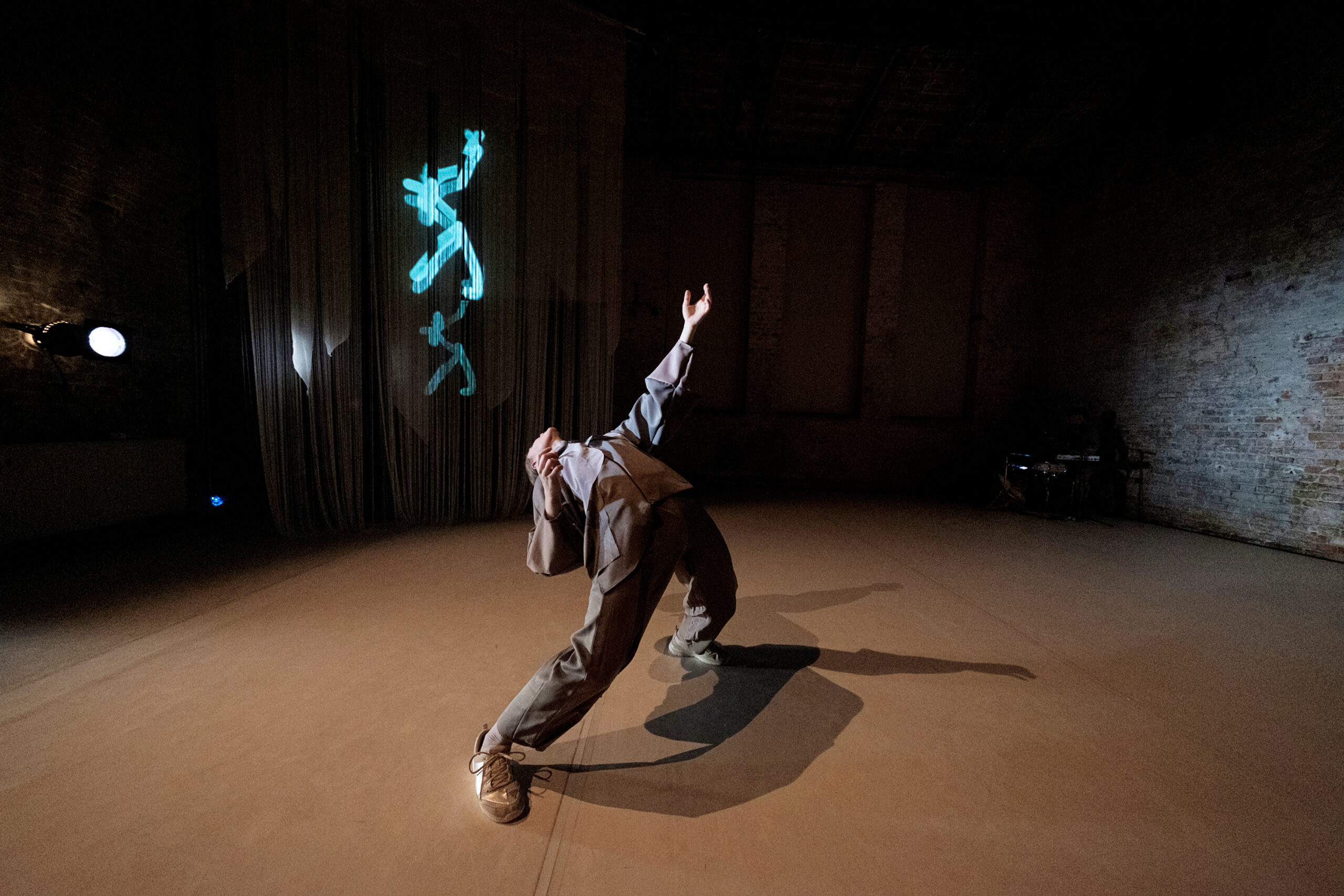How are Dance Artists Using AI—and What Could the Technology Mean for the Industry?
According to ChatGPT, there are countless ways artificial intelligence can be useful to dance artists: Need a brainstorming partner? Help planning rehearsals? A tool for generating new movement? A way of documenting your work? Look no further than the buzzy chatbot technology, it told me when I asked.
But don’t worry: The chatbot also said that “while ChatGPT can be a valuable tool for choreographers, it should not replace the artistic intuition and expertise that come from years of training and experience.”
If it sounds like the robot doth protest too much, that may be its attempt to acknowledge a growing existential concern, as the dance world reckons with the current and possible future impacts of ever-expanding artificial-intelligence tools. These technologies are further complicating the dance world’s already-broken relationships to copyright, crediting, compensation, and consent. And, yes, they could potentially remove artists from the dancemaking process.
Even so, dance artists are increasingly inspired by the generative potential of AI, whether as a choreographic tool, a topic to probe onstage, or an entryway into the broader intersection of dance and technology. And it isn’t just dance artists who are using AI in their practice. The big data companies that wield AI are also eager to “use” dancers, as their tech trolls the internet for movement data and seeks to profit from dance artists’ embodied knowledge. The trend has the potential to create a whole new world of lucrative and fascinating opportunities for dance artists—or to unleash a movement-data-harvesting free-for-all.
“On the one hand, I’m very excited for dancers and choreographers who use these tools to generate creative outputs that couldn’t be imagined years ago,” says Sydney Skybetter, choreographer and founder of the Conference for Research on Choreographic Interfaces. “On the other hand, I’m concerned for how these technologies leverage data extracted from our bodies.”
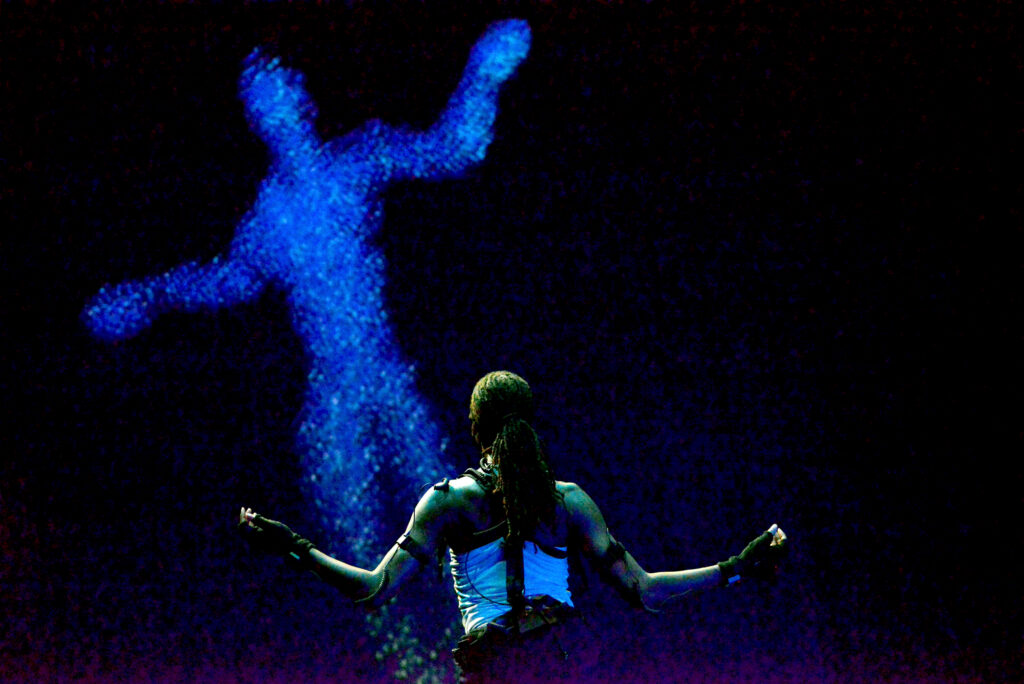
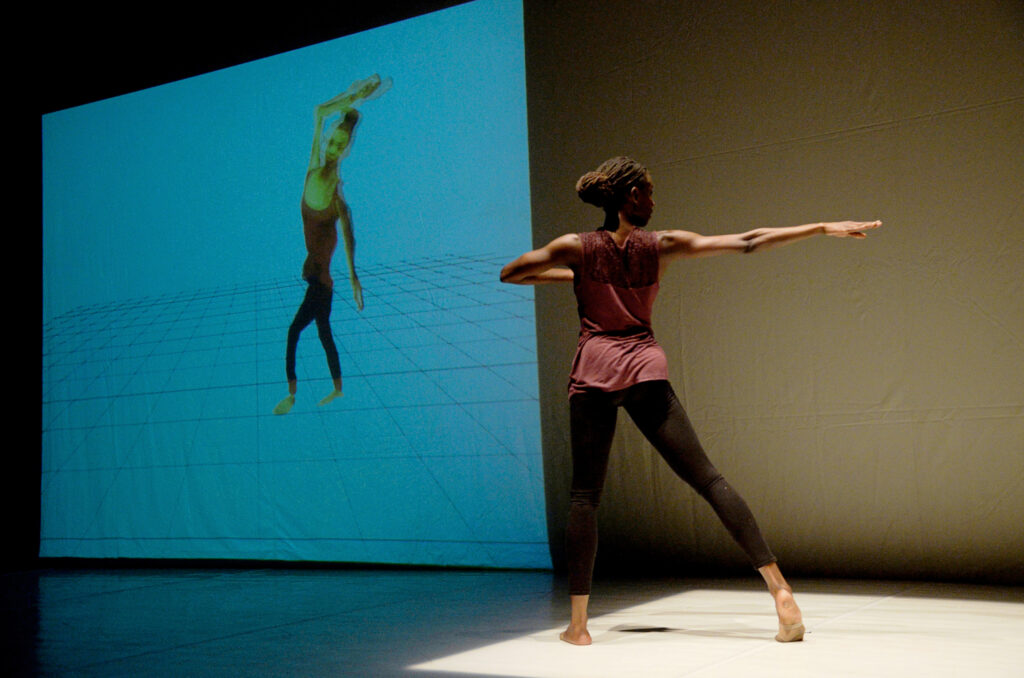
AI as Dance Partner
The first time choreographer and roboticist Catie Cuan danced with an artificially intelligent robot—a machine that moves using AI—“it felt as though I had exported a part of myself into this agent,” she says. “And then I could experience it back and move alongside it, which felt as though I had collapsed space and time, and could externalize my physical being and then re-engage with it.”
Other choreographers who’ve partnered with an AI technology report feeling similarly expanded, if not in body then in movement possibility. In Valencia James’ AI_am project, for instance, James improvised with an AI-powered computer, as represented by an avatar projected onstage, that she and her team had “taught” to dance using motion-capture technology. “It really extended my idea of what dance could be,” James says. “We didn’t give it any real-world physics, so it could do movements that would not be humanly possible, but I found that was really inspiring and generative to explore what it means to move in the style of impossibility.”
Pontus Lidberg experienced this on a large scale with his 2020 Centaur, for Danish Dance Theatre, which used several AI modules to create a voiced avatar that gave nine dancers onstage instructions that varied in each performance. He found that the algorithms, which were based on elements including game design, planetary movements, and swarm technology, were adept at creating complex compositions in unexpected ways.
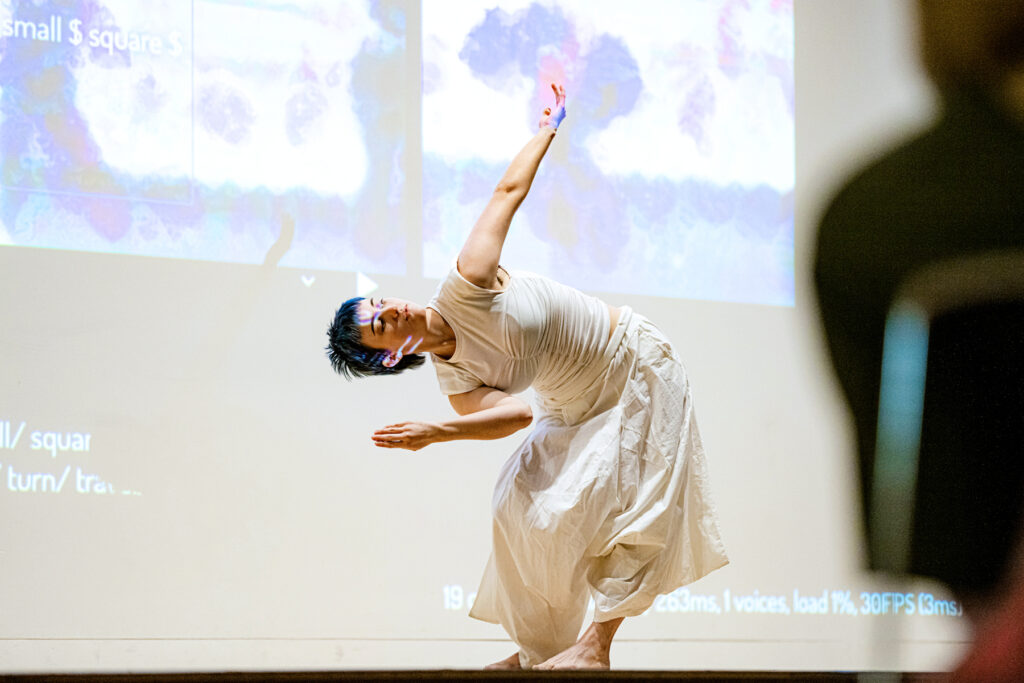
Carnrike, Courtesy Kate Sicchio.
Exploring AI Onstage
Other artists are finding meaning in dancing not necessarily with AI but about AI, forcing audiences to reckon with its ever-expanding role in our lives.
In Katherine Longstreth’s in-process work, the last dance picture show, the choreographer gets in an argument with an AI about creativity and originality. But it isn’t really an AI—it’s a scripted voiceover: Longstreth sees the technology as a potential threat. “If the tentacles of AI reach into the corporeal data of performing artists,” says Longstreth, “the implications will be catastrophic for dancers.”
She’s particularly interested in debunking the idea, prevalent in tech spaces, that AIs don’t copy artists’ work but simply use it for training. “This is just malarkey,” says Longstreth. “Your training defines who you are—I believe that to be true for humans and for these machines. It’s baloney to say that they can train on your artwork, and yet not have your artwork show up in their creative output.”
Daniel Gwirtzman metaphorically embodies artificial intelligence himself in e-Motion, which was co-conceived and written by Saviana Stanescu and explores the relationship between a neuroscientist and her creature, and was inspired by conversations with ChatGPT. Though Gwirtzman considers ChatGPT a collaborator on e-Motion, he can’t envision artificial intelligence independently authoring true choreography. “It’s hard to imagine taking out the self, the scrutiny, the deliberation, and calling it a piece of choreography,” he says.
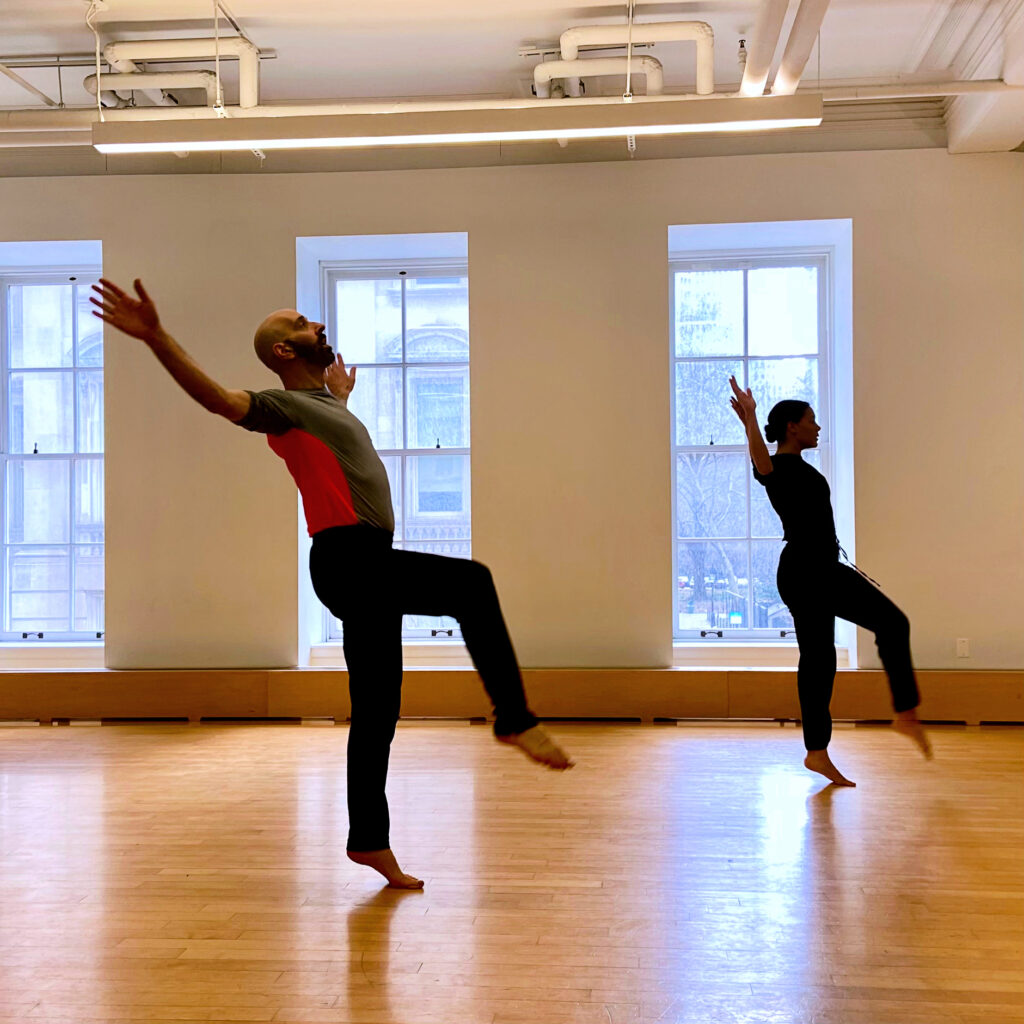


Mining Movement Data
In the past several years, both Facebook and Stanford University have launched artificially intelligent movement-generation tools—almost like ChatGPT, but for dance. These tools encapsulate many of the questions that will determine whether artificial intelligence empowers or erases dance artists. How were these AIs trained, and with whose movement? Were dance artists involved in their development? Will they actually be useful for dance artists? And do they have the potential to replace real choreographic labor?
As for the first question—how AIs are “trained” with movement data—choreographer and artist-engineer Laurel Lawson says that dance artists are already being taken advantage of, whether or not they realize it yet. Some technology companies, she says, are harvesting movement data directly from videos online, without consent, credit, or compensation. And while other big-data companies may hire dancers for a project, Lawson worries that these artists don’t know how the movement they provide may be used later on. “It is critical that artists contractually specify and have knowledge and control about how their movement might be applied, recombined, or used in training data in the future,” she says.
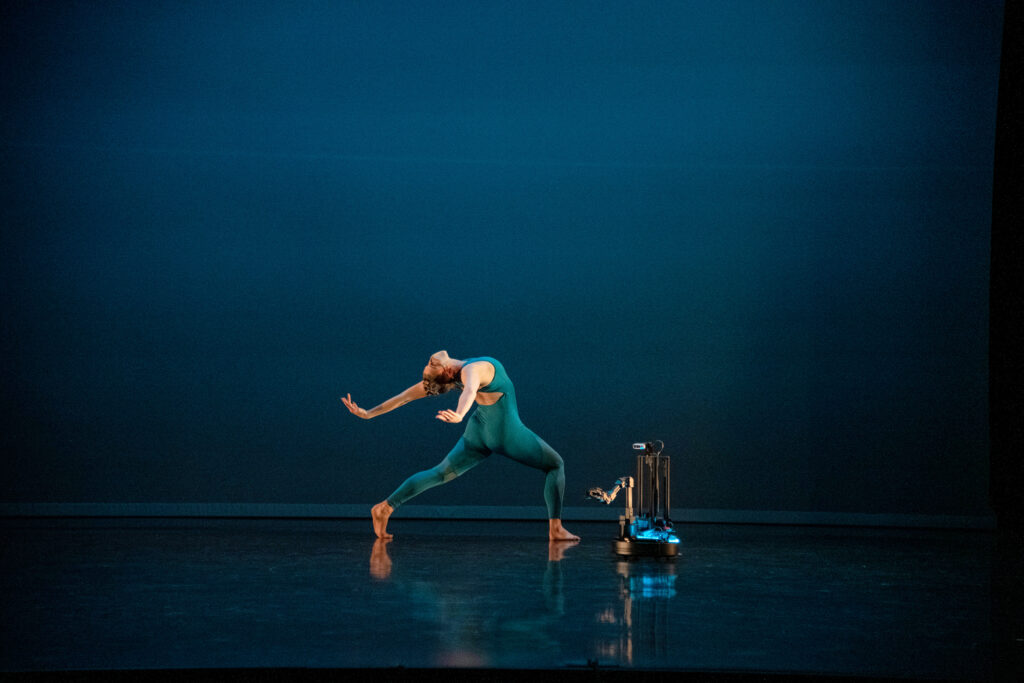
The training of AIs can pose other ethical issues, which is why Kate Sicchio, assistant professor of Dance and Media Technologies at Virginia Commonwealth University, always creates her own data sets rather than using existing training data. “If I have a data set that I just got off the internet, whose body is in there?” she says. “Did they sign up for this?” She cites an instance when an AI that could create “hip-hop” dances had been trained solely on data from Japan. “It’s this African diasporic dance form,” she says. “How do we protect people’s identity and cultural knowledge when it starts to come down to numbers?”
Choreographer Irina Demina is confronting this question head-on with her KLOF. cyberographies of folk, a piece that asks an AI that’s been trained in 26 folk dances to create a new, “universal” folk dance. She says she trusts technology to perform this specific task more than she would a human, and yet it is practically impossible to create an AI devoid of human bias. AIs constantly make value judgments about whose bodies matter based on the data they’re trained on, points out Skybetter. And the very nature of AI—which takes that data and looks for patterns—has the potential to erase bodies that fall outside what it views as the norm.
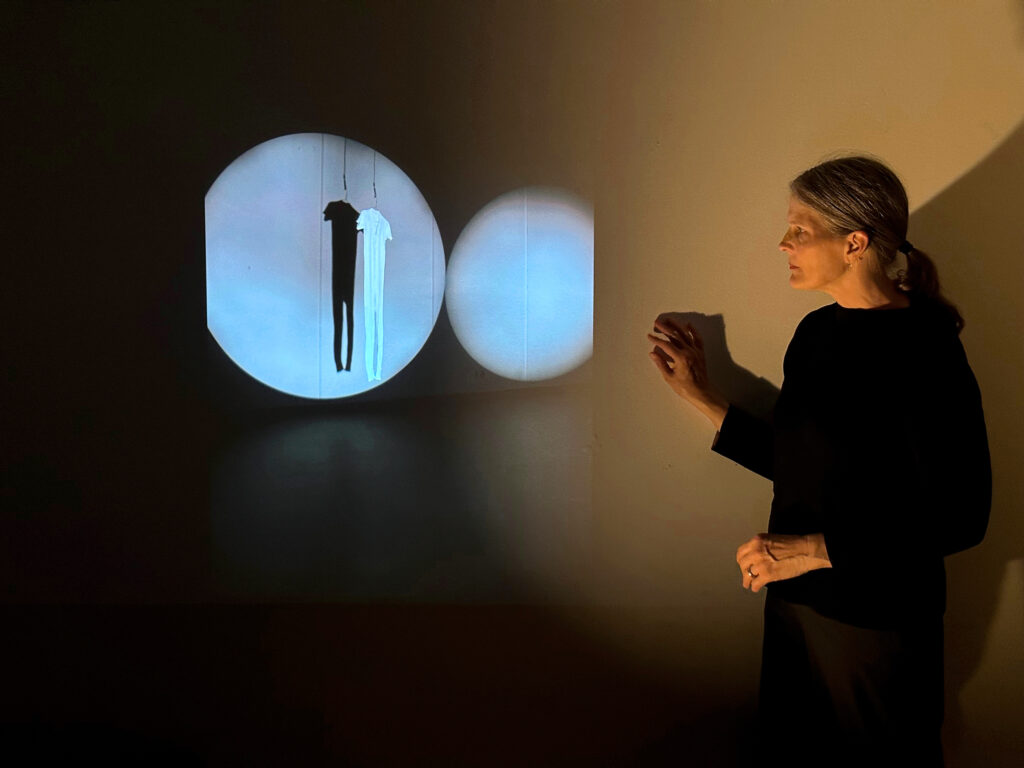
Looking to the Future
There will likely always be human artistic labor involved at the intersection of AI and dance, even if the source of that labor is erased. But Cuan hopes that the growth of AI in dance spaces will create new opportunities for choreographers, rather than displacing them.
“I have this crazy job right now where I’m a robot choreographer,” she says. “But I think there’s going to be thousands more. We’re going to have choreographers who make gesture interfaces, spatial-audio choreographers who figure out how audio is going to track around the room, metaverse choreographers. What I’m advocating for is that the tide by which those technologies are moving can be paired with the movement of choreographic knowledge such that the two move forward together.”
This means dance artists need to be invited to the table—as true collaborators, not just as “decoration,” as Sicchio puts it. But it also means that artists themselves must “consider the notion that choreographic knowledge has so much to offer outside of the proscenium,” says Cuan. “I think choreographers have an amazing role to play in that world.”
